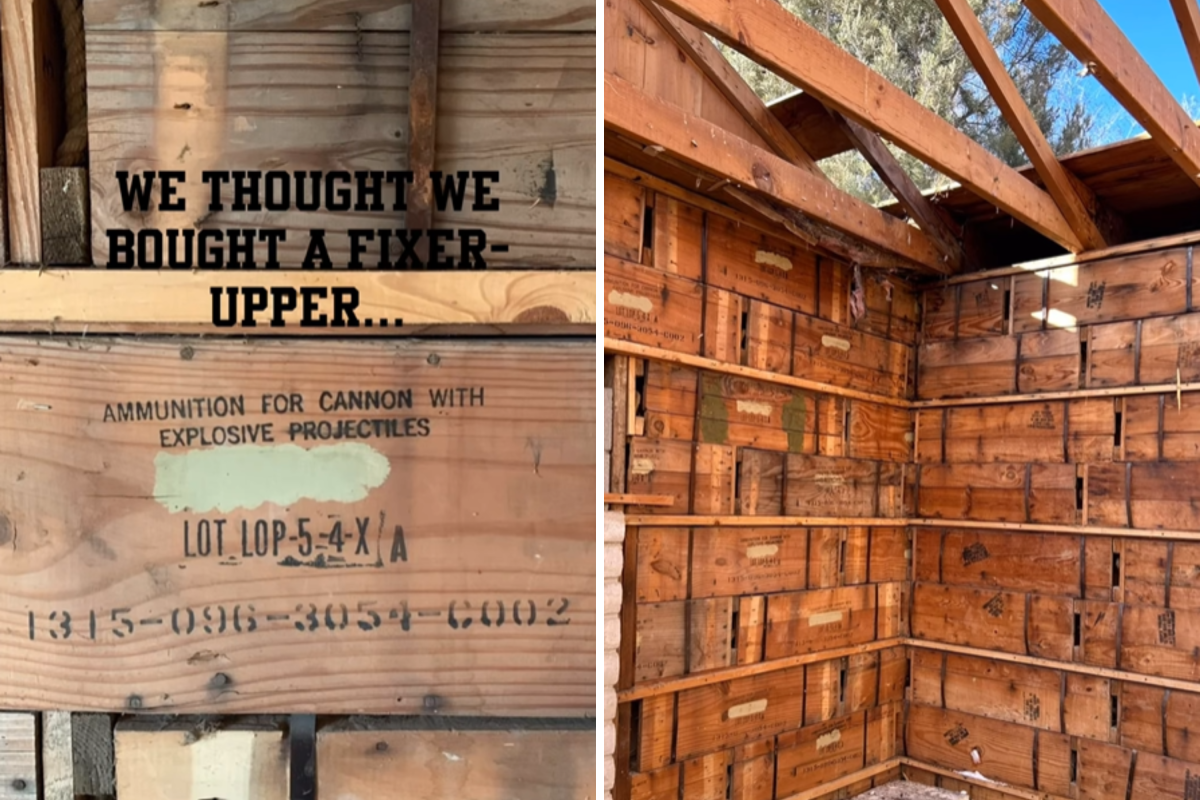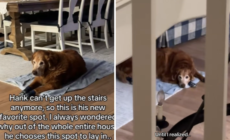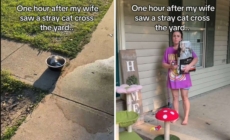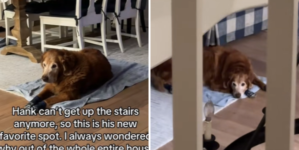-
Common Belief About Left-Handed People Debunked by Psychologists - 9 mins ago
-
Tesla stock price sinks as Musk and Trump feud over spending bill - 19 mins ago
-
2025 Gold Cup Odds: Mexico Slightly Favored Over U.S. Ahead Of Semifinals - 26 mins ago
-
Court in Thailand suspends prime minister over leaked phone call with Cambodian official - 32 mins ago
-
Woman Wonders Why Senior Dog Lies in One Spot—Then Has Tearful Realization - 48 mins ago
-
From Pure Flavors to Bold Innovations - about 1 hour ago
-
Real Madrid vs. Juventus: Preview, odds, how to watch, time - about 1 hour ago
-
SparkKitty mobile malware targets Android and iPhone - about 1 hour ago
-
Jessica Pegula loses in first round upset at Wimbledon - about 1 hour ago
-
Woman Sees Stray Cat in Yard, Husband Discovers Her Elaborate Safety Plan - about 1 hour ago
Couple Renovate ‘Fixer-Upper’ House—Then They Realize What Was in the Walls
A husband and wife working together to turn an old home into their dream property made a shock discovery in the walls during renovation.
Cody and Kourtni Price, both in their 30s, live in New Mexico, and in recent years became owners of a “fixer-upper” house they’ve affectionately dubbed the “old lady.”
“We bought this house about 2.5 years ago as our second fixer-upper. It’s a quirky mid-century home that we thought just needed some basic TLC,” Kourtni told Newsweek.
It turned into a bigger project than the couple had anticipated, however, and “what started as a light renovation turned into a full renovation.”
“We extended the house, replaced failing trusses, and basically had to start over,” she explained, doing most of the work themselves over late nights and weekends alongside their children, as they work to turn the old lady into their forever home,” she said.
Instagram @fixinguptheoldlady
Working on an old house can uncover mysteries, from a secret staircase to a hidden room—and in the Price’s case, they made a shocking discovery when they realized “whole sections of the house had been built using WWII ammo shell crates — stacked and nailed together as walls.”
The couple regularly share their renovations to their Instagram account @fixinguptheoldlady, and on June 9 posted a video of the moment they found the ammo cans as they pulled wood from the walls.
Behind the panels were dozens and dozens of ammo boxes, “used as framing material” for the house. They explained in a caption that the original brick home was likely built in the 1940s or 1950s, but in the 1970s, the then-owner added to the house “using what they had: leftover military materials from a nearby surplus depot.”
Kourtni recalled the “complete shock” at finding the ammo boxes behind the walls of their home, admitting: “We didn’t even know this was a thing — but we’ve since learned that it was a common practice locally in the 70s, when there was a military surplus depot nearby.
“People could buy truckloads of these crates for cheap and use them for sheds, add-ons, even whole houses!”
Instagram users had a huge response, awarding the video close to 15,000 likes, as one commenter called it “brilliant,” and another suggested they keep them as “a neat feature wall in a study or office” to “hold on to a piece of her history.”
“Clear coat them. Keep them as the wall,” another suggested, calling it “so cool.”
“Please tell me you kept them in the renovations,” another said—to which the Prices confirmed they’re considering using the boxes as flooring in their kids’ bedrooms, or as “floating shelves.”
However, she told Newsweek that as “cool as they were,” they don’t plan on keeping the crates in the walls, as “some were rotted or compromised, and we’re going for a warmer, more family-friendly vibe.
“We still have a lot of the crates, and we’ll find a way to incorporate a few of them into our boys’ room or decor—they’re part of the story now.”

Instagram @fixinguptheoldlady
Kourtni called the big response to her video “wild,” explaining they “had no idea this would resonate with so many people,” but they’ve been enjoying how it “sparked conversations about creativity, resourcefulness, and home building.”
The ammo boxes aren’t the only interesting finds in their new-old home, as they also found metal newspapers—which they also “didn’t know existed”—from the 1970s, which had been used as roofing material.
Hot metal typesetting involved injecting molten type metal into a mold to create words. It grew to prominence in the late 19th century, but was largely phased out in the 1970s and 1980s. News organizations in United Kingdom were one of the last places in the world to continue using hot metal, before largely moving to computerization in the late 1980s, according to The Guardian.
“It’s been fascinating reading through old headlines, prices, even advice columns,” Kourtni Price said. “This house is a time capsule.”
Do you have funny and adorable videos or pictures you want to share? Send them to life@newsweek.com with some extra details, and they could appear on our website.
Source link































